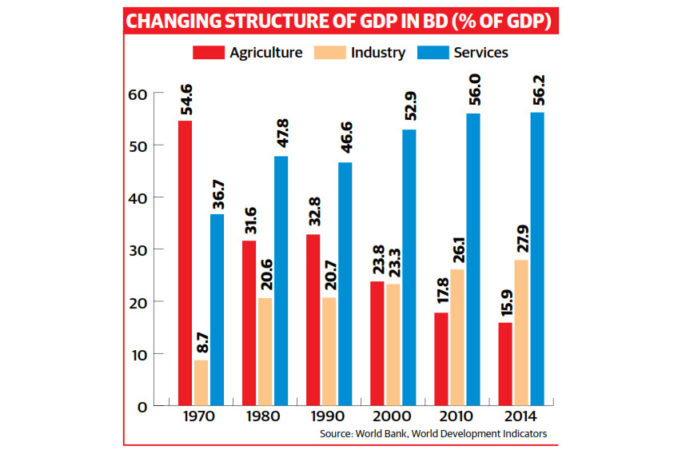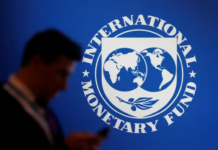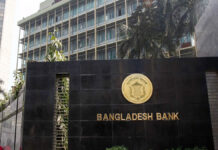The employment structure in Bangladesh has changed considerably over the recent decades as industry sector outpaces agriculture significantly in job creation during the period, says a new study
“In 1972, about 75% of the workforce was in primary industry (mostly agriculture) and 25% in non-agricultural sectors while in 2010 these ratios had changed greatly in which 47% were in agriculture and 53% in non-agriculture,” reads the study conducted by the United Nations Population Fund (UNFPA).
Among others, Prof Dr Shamsul Alam, senior secretary of General Economics Division (GED) of Planning Commission and Argentina Matavel Piccin, representative to UNFPA of Bangladesh, attended the study report unveiling ceremony held at NEC Conference Room of the Planning Commission in the city yesterday.
The report also shows that the share of agriculture in employment generation is much greater than its share in GDP and correspondingly the share of industry and services in GDP is much higher than its share in employment.
According to the report, contribution of agriculture to the GDP stood at 15.9% in 2014, which was 54.6% in 1970. On the other hand, contribution of industry sector to the GDP was 27.9% in 2014, which was 8.7% in 1970.
Over the 6th five-year plan period, the economic transformation of Bangladesh from an agrarian economy shifted towards manufacturing and modern services, says the report.
The growth of manufacturing has been impressive dominated by the readymade garment industry. The share of RMG in manufacturing employment rose from 44% in 2001 to 51% in 2009. It has thrived in the labour abundant urban agglomerations, according to the report.
The report says: “Notwithstanding several decades of moderately high economic growth, however, Bangladesh remains a poor country. Per capita GDP in nominal terms was US$1,033 in 2013 and Bangladesh ranked 186 out of 213 countries in per capital Gross National Income, placing it in the bottom fifth of countries ranked by income.”
In south Asia, only Afghanistan and Nepal ranked lower than Bangladesh in GNI in per capita income. Bangladesh until recently remained classified as a “low income” country by the World Bank whereas neighboring Pakistan, India, Sri Lanka and Bhutan had all graduated to “lower middle-income” status, reads the UNFPA study.
However, the rate of economic growth over the FY 2011-15 periods was 6.3% ahead of India, Thailand and Indonesia and the average for all developing countries. Therefore it was hardly surprising that in October 2015, Bangladesh was newly classified by the World Bank as a lower middle income country, viewes the report.
Source: Dhaka Tribune










